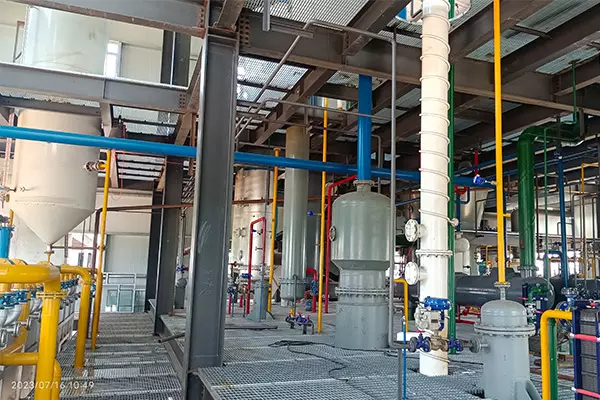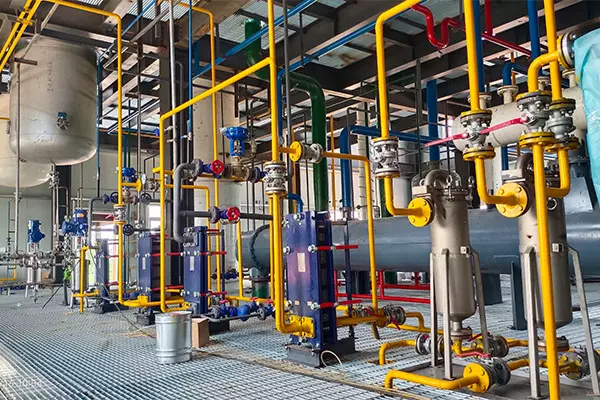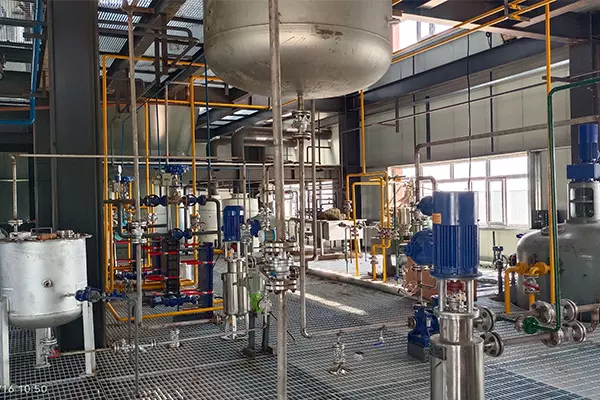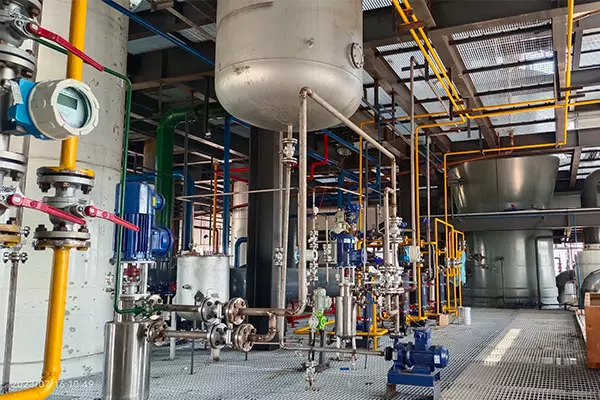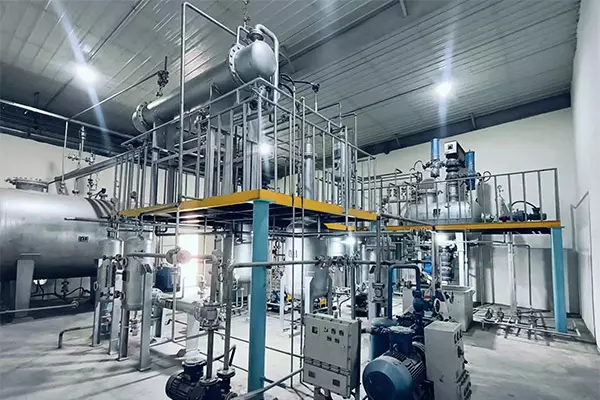
Introduction
Huatai specializes in manufacturing, supplying, and exporting highly energy-efficient, customized, cost-effective, turnkey projects for rice bran oil plants and refining processing plants. These projects maximize productivity, minimize operational costs, optimize by-product usage, and ensure a relatively shorter payback period.
Step1: Degumming Section
The degumming process is crucial for removing unwanted components like phospholipids, odors, colors, impurities, free fatty acids (FFA), and pigments from the rice bran oil. Depending on your needs, Huatai offers both acid and enzymatic degumming solutions.
Advantages of Huatai’s Degumming Section:
- Low steam and power consumption
- Controlled heating and cooling arrangements ensure higher yields
- The special design ensures optimal degumming
- Simple and low-maintenance
Step2: Continuous Pre-Bleaching Section
In this stage, the degummed rice bran oil is transferred from intermediate storage tanks to a slurry mixing tank. Here, it is heated using plate heat exchangers. Pre-calculated amounts of bleaching earth are added to the slurry mixer. This mixture is then moved to the bleacher for further processing, which helps in removing color and other impurities.
Benefits of Huatai’s Pre-Bleaching Section:
- High-speed oil earth mixer ensures quick and effective mixing
- The combination of dry and wet bleaching makes it versatile
- Simple and low-maintenance automation
Step3: Continuous Dewaxing Section
Dewaxing involves cooling the oil to a temperature where the wax solidifies, making it easier to filter out. The bleached oil is pumped to the STP-Crysta-Tower for crystallization. This ensures that the wax forms crystals that can be easily filtered out, resulting in clearer oil.
Benefits of Huatai’s Dewaxing Section:
- Low steam and power consumption
- Controlled cooling and efficient automation ensure higher yields
- The special design ensures optimal crystallization
- Simple and low maintenance with proper automation
- Space and structure saving
Step4: Continuous Post-Bleaching Section
After dewaxing, the rice bran oil is pumped to another slurry mixing tank, heated again through plate heat exchangers, and then transferred to the post-bleacher. This additional bleaching step further refines the oil, ensuring it is free from any remaining impurities. (Read more: palm oil bleaching. >>)
Benefits of Huatai’s Post-Bleaching Section:
- High-speed oil earth mixer ensures quick and effective mixing
- The combination of dry and wet bleaching makes it versatile
- Simple and low-maintenance automation
Step5: Continuous Low-Temperature (TFT) Deodorizing Section
Deodorizing is a distillation process that removes fatty acids and other volatile compounds from the oil under high temperature and vacuum conditions. The dewaxed oil is heated through a series of heat exchangers and the deodorizer, ensuring maximum heat exchange and effective deodorization. This step is essential for improving the oil’s taste and shelf life.
Benefits of Huatai’s Deodorizing Section:
- Vacuum balance tray design ensures effective distillation
- Online fatty spraying helps prevent vapor logging
- Special de-aeration tray increases heat exchange efficiency
- Efficient regenerative heat exchanging trays ensure maximum heat recovery
- Counter current flow design increases tray efficiency
- Vacuum sealing arrangement for power failure
- Simple and low-maintenance automation
Step6: Vapor Scrubbing
During deodorization, volatile matters are stripped from the oil and led to the vapor scrubber. Here, they are condensed, cooled, and collected for storage. This process minimizes the carryover of fatty materials to the vacuum system, ensuring a cleaner final product.
Step7: Continuous Winterization Section
Winterization is the final step, where the oil is cooled to a temperature that allows the uterine to solidify. The deodorized oil is pumped to the STP-Crysta-Tower for crystallization, ensuring the sterine forms crystals that are easy to filter out. This step is crucial for producing high-quality, clear rice bran oil.
Benefits of Huatai’s Winterization Section:
- Low steam and power consumption
- Controlled cooling and efficient automation ensure higher yields
- Simple and low maintenance with proper automation
- The special design ensures optimal crystallization
- Space and structure saving
Conclusion
Huatai’s rice bran oil refining process is designed to produce high-quality, refined rice bran oil while maximizing efficiency and minimizing costs. With advanced automation, special design features, and energy-efficient processes, Huatai ensures the best outcomes for its clients. (Read more: rice bran oil solvent extraction process. >>)
Get your best price
- Engineer quick quote
- The overall delivery speed is fast
- Financial choice
- Low installation costs and cost savings
30 years+ of oil mill plant R&D
More than 56 innovative technologies

